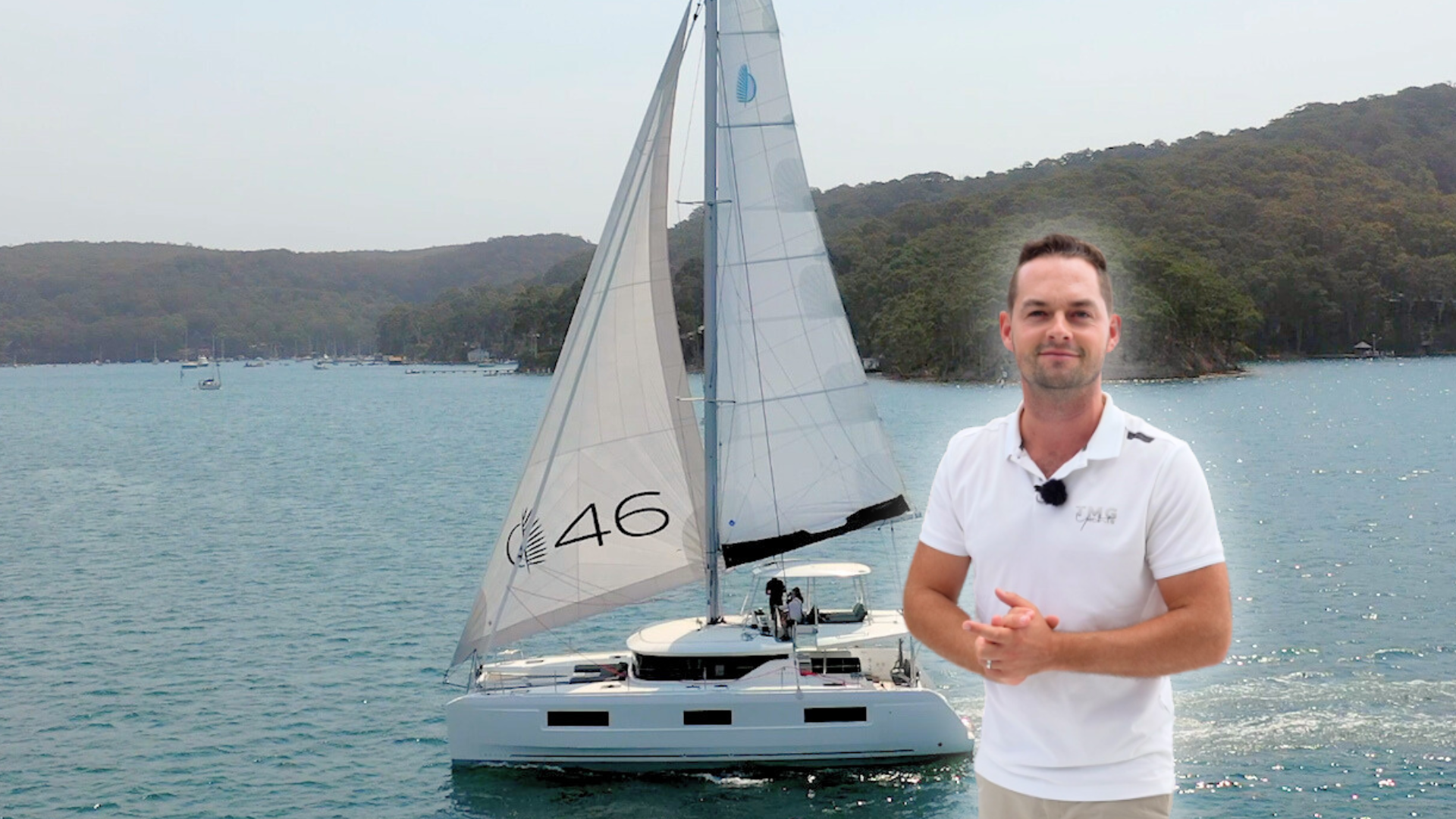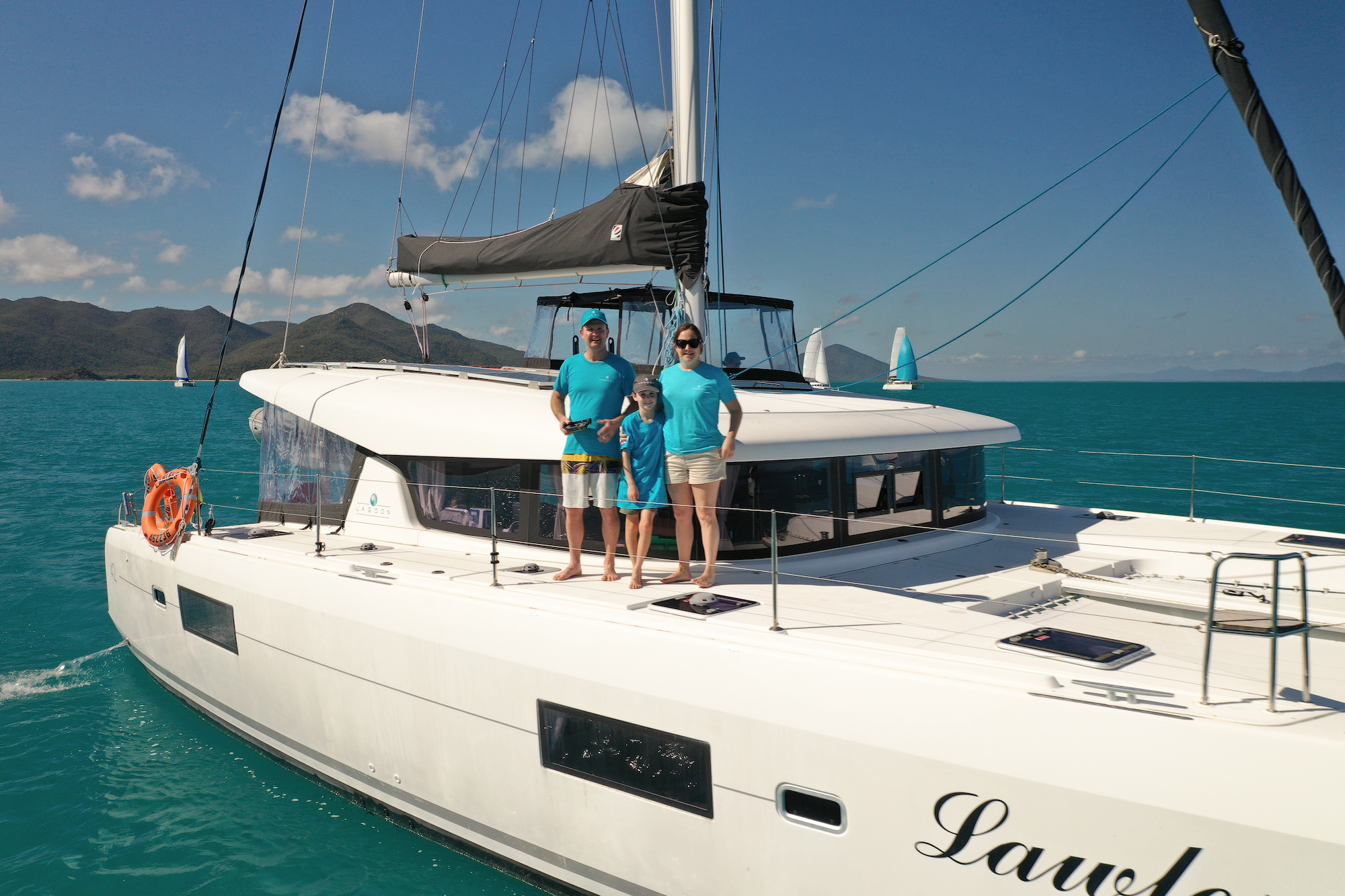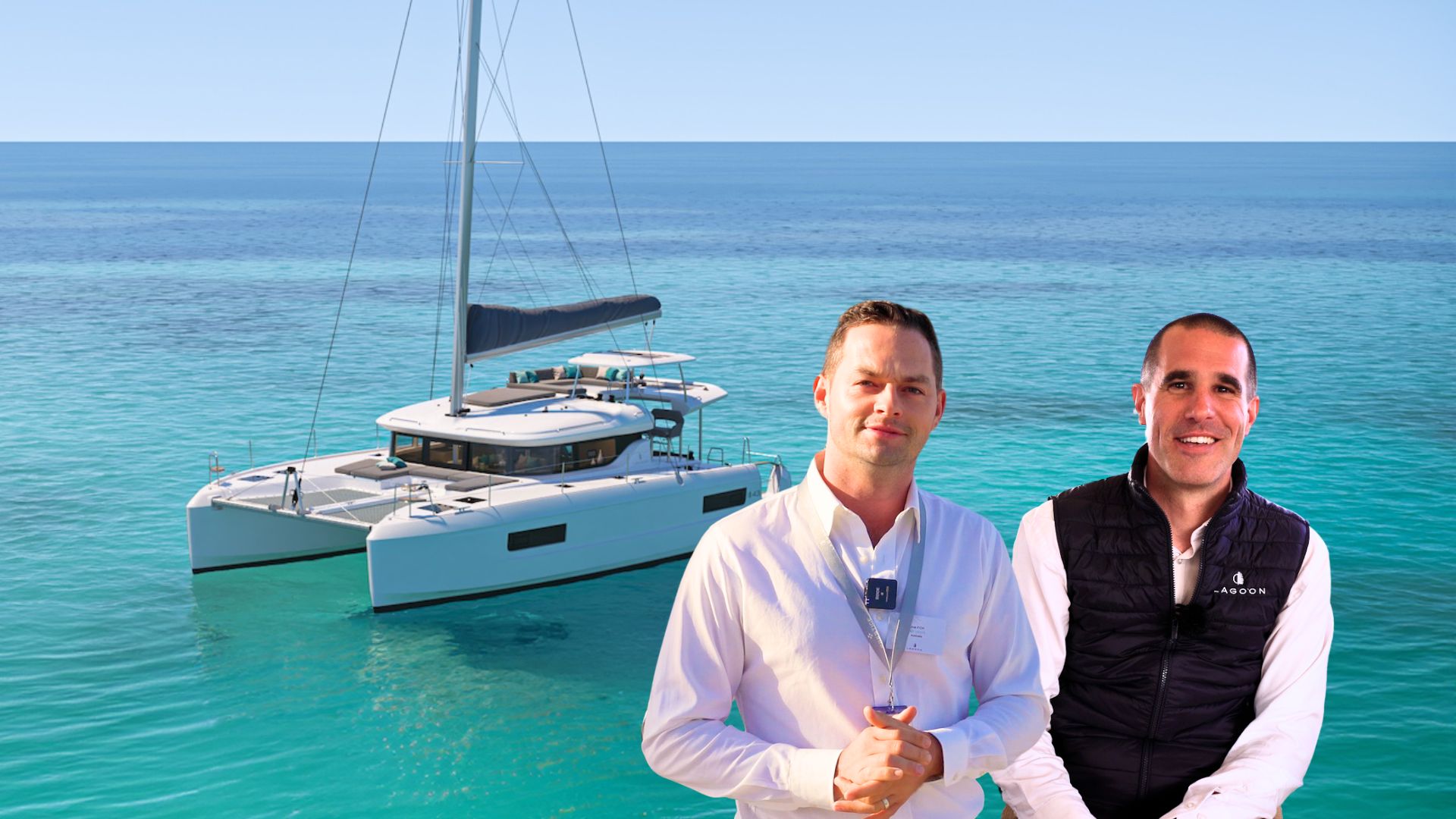Lagoon performance secrets: the Length on Water Line
The secrets of a catamaran’s performance: the Length on Water Line
Lagoon Inside is the definitive catamaran sailors’ blog, written for Lagoon enthusiasts around the world who want to read and learn about all things Lagoon.
This blog is part of a series of technical insights from the team, looking at the performance, details and secrets from your favourite French catamaran.
The following content was written by Caroline at Lagoon Inside, and has been slightly modified. For the original article, click here.


What is the Length on Water Line?
The Length on Water Line or waterline length is an objective criterion to gage the speed performance of a boat. This is the maximum length of the underwater hull of a boat.
On a multihull, the Length on Water Line is measured on the hull starting from the end of the bow to the tip of the stern. Be careful not to mix up the LWL with the Length Over All or LOA, which is the maximum length of the boat taking into account all the parts even the above-water ones, like a bowsprit.
When a boat hull moves on the surface of the water, it forms a wave system composed first of the bow wave, followed by the trough, and then another wave, called the stern wave.
The bow wave is circled on this photo of the 52 F on the right.
The horizontal distance between the crests of two waves is called the wavelength, shown below.


This wavelength increases with the speed of the boat, as shown in the drawing here.
Given that a moving boat is trapped between her bow and stern wave, it becomes clear that a sailboat will reach her maximum speed when her wavelength is equal to her Length on Water Line. This speed is referred to as the hull speed.
The faster the boat, the greater the bow wave will be, implying pitching and preventing her from going faster. This phenomenon is easily seen on a motorboat: at low speed, the trim is horizontal, and when accelerating, the boat rears up under the effect of her bow wave. She will then need a lot of energy to overcome this wave, which a motor boat does easily by speeding up.
Could we say that big sailing boats go faster than small ones?
We have just demonstrated above that the maximum speed of a boat is a function of her wavelength, and hence her Length on Water Line.
This correlation is expressed in the following formula* and will be used to determine the maximum speed of a boat:
Max hull speed= √((Length on Water Line x g) /( 2 x pi)) x 3600/1852
* Gerr, D., 1999: The Elements of Boat Strength: For Builders, Designers, and Owners, McGraw Hill Edition

Where g = 9.81m / s² is the universal gravitation number.
And Pi = 3.1416 …. Pi, sometimes called the Archimedean constant, is a number represented by the Greek letter of the same name (lowercase and italic): π.
This mathematical formula gives the results shown here.
It allows us to conclude that the longer the Length on Water Line, the better the speed performance of the boat.
Therefore, with this formula, we can objectively have a first measure to compare two catamarans with each other.
While a standard boat’s performance is limited by her maximum hull speed, multihulls and racing yachts are able to go beyond this speed.
The famous American victory with their “small” 60-foot catamaran, over the New Zealanders and their “big” 90-foot monohull at the America’s Cup in 1988, is a good example.
Beyond the size, there are also other elements that need to be considered in assessing the performance of a yacht such as the different forms of a hull, the ratio sail area/ displacement, and the width… To be continued.
Look out for the next installment from Lagoon Inside. If you have any questions on the technical aspects of Lagoon catamarans, our team would be happy to help – contact us today.
LATEST FROM THE BLOG
Boating terminology: Top 10 Nautical terms
In this new episode of Inspire and learn, we’re delving into the world of nautical terminology, sharing the top 10 essential terms for use onboard a boat or among nautical-minded people
A Family’s Whitsundays Adventure with Portland Roads
Join Rowan McMahon & family on an epic voyage aboard Portland Roads’ Lagoon 42 ‘Lawless’ at the Lagoon Escapade in Whitsundays!
Introducing the NEW Lagoon 43 Interview with Product Manager
Join us for an exclusive look at the highly anticipated Lagoon 43 with Quentin Beraut, Lagoon’s Product Manager.



